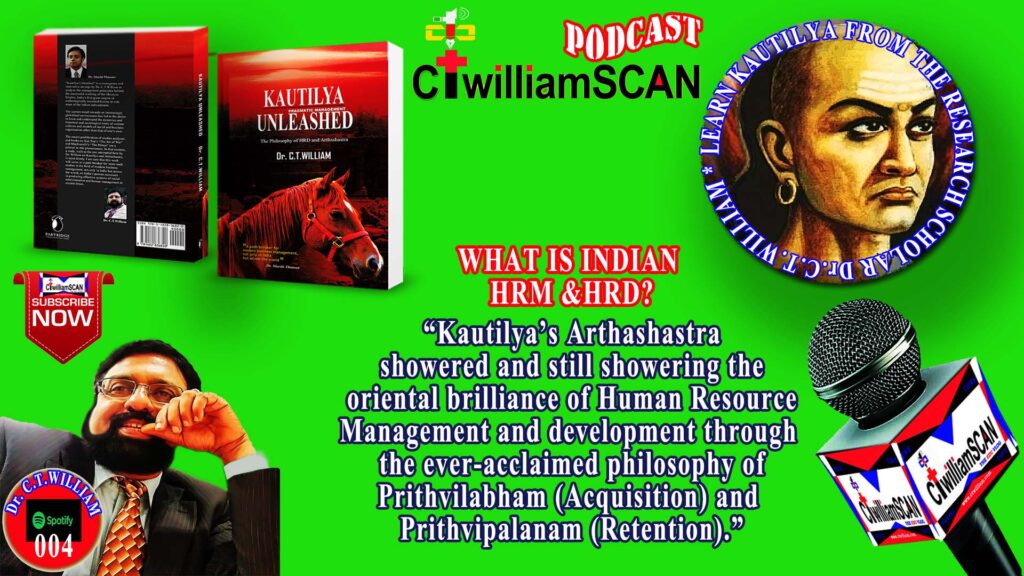Welcome to the podcast on The Kautilya Unleashed Series by Dr. C.T. William. Welcome to episode number four.
Thank you all for your massive support to my Podcast.
Let us listen to the introduction.
HRD, the three-lettered abbreviation of Human Resource Development has become a widely applicable Human Resource Management concept all around the world. At the same time, this trend-setting Human Resource Management concept is under the applicability test in the laboratories of the modern management and political gurus. The question is regarding the micro as well as the macro dimensions of its application in the organisational-corporate level and the state-national level. Watch Video
In the midst of these experiments and commotions evolved, many personal managers and their organizations have made HRD a synonym for their training and development departments. A major segment of organizations around the globe has christened their personal department as HRD departments.
It was Leonard Naddler who, in 1969 formally introduced the concept of HRD while presenting a paper at a conference, organized by the American Society for Training and Development (Reference: www.astd.com). Naddler has defined HRD as “those learning experiences which are organized for a specific time and designed to bring about the possibility of behavioural change.” Here the ‘organized learning experiences’ imply the acquisition of resources and ‘bringing about the possibility of behavioural change’ implies the retention of the acquired resources. We shall see how this echoes Kautilyan concept of Human Resource Development.
The noted Indian HRD Guru T. Venkateswara Rao (1986) who extensively worked on the subject has further defined HRD as a process by which employees of the organization are helped in a continuous and planned way to: acquire and sharpen capabilities to perform various functions associated with their present or expected future roles [Acquisition of resources]; develop their general capabilities as individuals and discover and exploit their potentials for their own or organizational development purposes [HRD]; and to develop an organizational culture in which superior-subordinate relationship, teamwork and collaboration among sub-units are strong and contribute to the professional well-being, motivation and pride of employees [Retention of the acquired resources].
Thank you for listening to Dr. C.T. William.
This podcast will continue. Please stay tuned.


